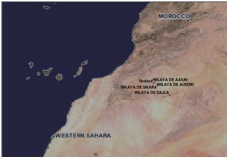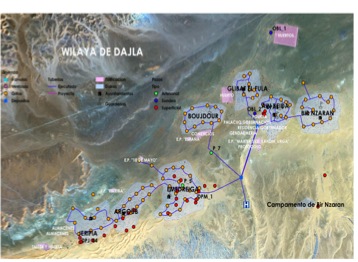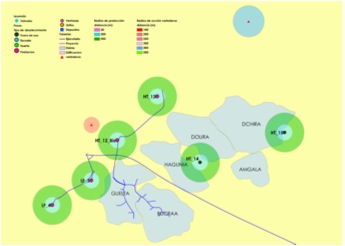AQUA - SAHARA 3
Technical and formative strengthening of the Hydrogeology Unit of the Department of Hydraulics of the Saharan refugee camps.
Funders
Dirección Xeral de Cooperación Exterior. Xunta de Galicia
Participants
Enxeñería Sen Fronteriras Galicia. Departamento de Hidraúlica de la R.A.S.D.
Duration
2007 - 2008
Researchers
Jose Anta, Acacia Naves & F. Alberto Varela
Description
As a result of the occupation in 1976 of the Western Sahara by Morocco, the saharan people were forced to settle in the Hammada of Tindouf (Argelia). Since then, they have lived in the saharan refugee camps, administered by the Sahrawi Arab Democratic Republic (SADR). After more than thirty years the refugee population continue to suffer an unjustified exile, living in precarious conditions in one of the most inhospitable parts of the desert, surviving with dignity and awaiting the holding of a referendum to end this territorial conflict.

This project constitutes a new phase in the strengthening projects of the Hydrogeology Unit carried out by ESF Galicia and the University of Santiago de Compostela (USC) since 2004. Since then a group of terchnicians has been qualified to evaluate the underground water resources of the camps, to plan new catchments and to provide a more efficient and sustainable managment. Sensitisation and impact activities have also been developed in Spain during this time, spreading awareness of the condition of the saharan people and of the difficulty in accesing drinking water in the refugee camps of Tindouf.
The thirds phase of the project AQUA-SAHARA continues with the training of local technicians and features a new objective that consists in the formation of a Geographical Information System for the large quantity of hydrogeological information and of the system of storage that the numerous association working in the area have been generating.


Another aspect of development within this project has been the diagnosis of the Solid Urban Residues of the camps. A report has been compiled which attempts to detect the deficiencies of the system and serves as a base for a possible sectorial plan, as well as permitting the analysis of the interaction between possible contamination points, such as dumps, and the supply wells for human consumption.
As part of the second phase of the AQUASAHARA project, members of the ESF Galicia planned and installed an internet connection via satellite in the Department of Hydraulics which facilitated the assesment duties of the Hydrogeology Unit and also permitted the access by personnel to all the information on the internet for training purposes. This phase returned to the transversal use of Information and Communication Technologies (ICTs) in the project, in order to strengthen the other related party with the installation of a communication system via radio between the wells, the building and the workings of the Department of Hydraulics (in collaboration with ISF Castilla y León).
Collaboration has also taken place with other associations such as ISF Asturias, which is the major player in the Training Seminars of the personnel of the Department of Hydraulics and in the creation and support of the Water Quality Unit which is in charge of sample taking and analysis for the obsertvation of the quality of drinking water. ISF Aragón researches the possibility of the re-use of the brackish waste water produced through the processes of inverse osmosis.
All work undertaken forms part of the Plan Director de Agua formulated by SI-Andalucia. This project seeks ro improve the access to water, primarily through the construction of infrastructures and by making the population aware of the correct use of the drinking water.
Keywords
Supply; Training; Saharan Refugee Camps; Developmental Cooperation
Related works
- Anta, J.; Naves, A. & Maceiras, J. (2008)











